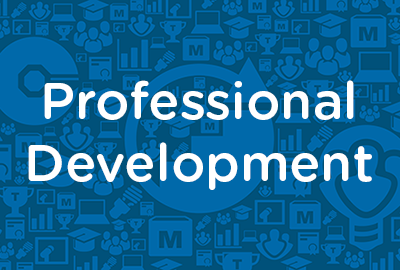 |
Budgeting: Operating Budgets |
1.00 |
An operating budget is a projection of the entire income statement of a company, or department. Operating budgets manage the operations of a company or department. They include the expenses associated with manufacturing, selling, and distributing products. Operating budgets also help to administer the daily functioning of the company. They project the expenses a company will incur in its manufacturing facilities, as well as the revenue that it will generate. |
 |
Budgeting: Manufacturing Budgets |
0.50 |
Manufacturing budgets outline and plan the expenses that a company undertakes to manufacture its products. Until products are sold, the cost of producing them is considered part of the company’s assets as inventory. Generally, you would not consolidate these expenses with non-manufacturing budgets in the master budget. |
 |
Cross-Cultural Business Communication: Cross-Cultural Business Situations (Instructor Guide) |
1.00 |
You might be asked to attend or take part in cross-cultural meetings. Although cross-cultural meetings are common when you travel to a foreign country, they can also take place when several cultures send their representatives to attend meetings. These meetings might also take place over the telephone, online, or in a video conference.
In this course you will learn to: attend and organize cross-cultural meetings, conduct negotiations, and solve problems during a cross-cultural meeting.
This Instructor's Edition of this course includes notes and suggestions to assist you in presenting the material, whether in an in-person classroom setting, or as an instructor-led online or distance-learning course. It also provides you with the answers to questions found in mid-lesson activities, as well as in the quiz that concludes the course. |
 |
Domestic Abuse |
2.00 |
Domestic Violence, or Intimate Partner Violence (IPV), is defined as physical abuse or aggression that occurs in a romantic relationship. “Intimate partner” refers to current and former spouses and dating partners.
This course will discuss the causes of domestic abuse, explain what characteristics to look for when identifying domestic abuse, determine appropriate ways to address abuse in your relationship or with a loved one, suggest ways to prevent abuse, and provide resources for further assistance with domestic abuse. |
 |
Dance for Joy: Movement, Music, and Rhyme |
1.00 |
This module from Dance for Joy will provide teachers with resources and activities that can be used and modified to support physical, mental, social, and emotional development in young children.
This course covers 5 activities: I Touch My Nose, I Touch My Toes, Hold Yourself Tight, Wake Up Right, Reach One Way, Reach the Other, Locomotor Freeze Dance, Salt and Pepper Dance. |
 |
Attention-Deficit/Hyperactivity Disorder (ADHD) |
0.50 |
This course covers Attention-Deficit/Hyperactivity Disorder, also known as ADHD. A key discussion point of this course is whether ADHD is the wandering of attention, which is a trait, versus the deficit of attention, which is a disorder. We'll cover topics that include what ADHD is, its characteristics, the signs of ADHD, and possible medications or accommodations. It is just one out of many educational courses we offer. This course will help you develop new knowledge about children and help you better understand your role. |
 |
Comenzar una Nueva Carrera (Spanish) Beginning a New Career |
0.50 |
En este curso, aprenderá más sobre cómo determinar qué carrera es la adecuada para usted, qué considerar antes de cambiar de carrera, cómo evaluarse a sí mismo al considerar una carrera y más.
In this course, you’ll learn more about how to determine what career is right for you, what to consider before changing careers, how to evaluate yourself as you consider a career, and more. |
 |
Customer Service: Customer Service Skills |
1.00 |
A great customer service representative should have skills in three key areas: organization (time and stress management), motivation (letting customers know you care), and communication (vocal, verbal, and visual). The core strength of a good customer service rep is sound knowledge of the organization’s products and services. |
 |
Customer Service: Greeting Customers |
1.00 |
Answering the phone when you know that you might be on the wrong end of a verbal confrontation is difficult, but it’s the first step in dealing with customer service issues. How you answer the phone will set a tone with the customer on the other end. Greeting a customer requires much more than a simple “Hello, how can I help you?” |
 |
Customer Service: Listening and Questioning |
0.75 |
This topic will discuss the various types of listening: passive, selective, and active. You will learn that paraphrasing or summarizing what the customer says is a good way to confirm what you hear. In this course, you will also learn about questioning and the types of questions that are used to elicit the information you want from customers. There are four types of questions: open-ended, closed, alternative-choice, and clarifying. This course will also discuss the examination process that can be used to understand the customer’s problem and prescribe a realistic solution. |
 |
Exploring Developmental Needs and Characteristics: Age Group 13 to 17 for Paraprofessionals |
1.50 |
Certain developmental needs and traits are associated with younger school-age children, while others are typical of older school-age children. While the differences between school-age children of different ages are not clear-cut, there are some general traits and tasks that are often associated with older school-age children. This course delves into the specific traits of students between the ages of 13 and 17. |
 |
Effective Presentations: Presentation Process (Instructor Guide) |
1.34 |
For a presenter to communicate a message to the audience successfully, you have to do more than simply transfer information. Instead, you need to create meaning for the audience, which is done by preparing and delivering your presentation in a manner that focuses on the audience. It is important to remember that the presentation can accomplish your objectives only if it is meaningful to the audience.
This Instructor's Edition of this course includes notes and suggestions to assist you in presenting the material, whether in an in-person classroom setting, or as an instructor-led online or distance-learning course. It also provides you with the answers to questions found in mid-lesson activities, as well as in the quiz that concludes the course. |
 |
Development and Characteristics of Learners for Teachers |
1.00 |
Development and Characteristics of Learners will assist you in fostering a solid understanding of how children develop and the disability categories that may impact their learning. This course will also help you gain invaluable insight into ways you can support children and meet their needs. |
 |
Stress First Aid for Long-Term Care Staff |
1.00 |
As an essential worker during a pandemic, your work stress is accompanied by the stressors in your personal life, as well as concerns about your family’s health. As staff in a long-term care facility, you also have the stress of caring for vulnerable individuals with serious medical and cognitive issues who may be reacting poorly to extended social isolation. This is unprecedented in long-term care, and it requires ongoing, effective stress management. Stress First Aid offers a flexible framework of tools for addressing stress reactions that can hopefully reduce the likelihood that these reactions will develop into more severe or long-term problems. |
 |
Exploring Developmental Needs and Characteristics: Age Group 8 to 10 for Paraprofessionals |
1.00 |
Certain developmental needs and traits are associated with younger school-age children, while others are typical of older school-age children. While the differences between school-age children of different ages are not clear-cut, there are some general traits and tasks that are often associated with younger school-age children. This course delves into the specific traits of students between the ages of 8 and 10. |
 |
E-Mail Etiquette: E-Mail Messages |
0.50 |
In this course, you will learn how to take advantage of the headers in e-mail messages. You will learn about the “To” field, in which you should type the recipient’s e-mail address. You will also learn when to send carbon copies and blind carbon copies of messages. You will learn the importance of writing a proper subject field for e-mail messages and that the header also includes the date and time of sending messages. Finally, you will learn how to construct the body of an e-mail message, add a personal touch to your messages by including a proper greeting, relay information by placing it in the appropriate order, and use different types of lists effectively. You learned the correct way to write long e-mail messages to keep recipients interested in the information and how to effectively close e-mail messages. |
 |
E-Mail Etiquette: E-Mail Effectiveness |
0.50 |
In this unit, you will learn the importance of considering the recipient before writing an e-mail; the factors to be considered before writing a message, such as your relationship with the recipient, the subject, and the purpose of writing the message; and how to effectively compose messages, anticipating negative recipient reactions such as skepticism and apathy. Finally, you will learn about managing your e-mail, checking your e-mail, handling large volumes of e-mail, helping others manage their e-mail volume, and setting the e-mail program to respond automatically. |
 |
E-Mail Etiquette: Netiquette Guidelines |
0.50 |
E-mail, a relatively new way of communicating, has changed the culture of communication. Online communication has its own rules regarding acceptable and unacceptable behavior. Netiquette refers to the set of rules you should follow when communicating online. |
 |
Creating and Maintaining Healthy and Safe School Environments |
1.00 |
Keeping school-age children healthy and safe is a major priority for schools. This requires careful attention to setting up the environment to promote healthy habits and using effective strategies for monitoring and maintaining a hygienic environment. It also requires setting up the classroom environment to promote safety and using effective strategies for monitoring and maintaining a safe environment. Because students are growing towards independence, it is also essential to help them develop habits and behaviors for living a healthy lifestyle and to help keep them safe from harm as they participate in school experiences. |
 |
Building Upward: Resuscitation of Anaphylactic Shock Part 4—Scenario 3 |
1.00 |
This scenario involves a patient with special needs who has developed angioedema. Paramedic student Vanessa Petote and Medical Director Dr. Jeremy Cushman speak about the care that a special needs patient must receive, as well as the specific challenges that accompany a patient with a potentially unstable airway. Final Exam: Please read each question carefully. You will have two attempts to gain a 70% or higher on this exam. If you are not successful in two attempts, you are welcome to take the course again to gain the certification. |
 , ,  |
Dance for Joy: Confident, Calm, and Compassionate |
1.00 |
This module from Dance for Joy will provide teachers with resources and activities that can be used and modified to support physical, mental, social, and emotional development in young children.
This course covers 5 activities: Tickle the Sky, Tapping, Every Little Cell, We are One, Scoop up the Universe. |
 |
CompTIA Advanced Security Practitioner (CASP+) CAS-004 Exam Prep |
1.00 |
Exam Prep to accompany 30 Bird's CompTIA Advanced Security Practitioner (CASP+) - Exam CAS-004 course. |
 |
Project Management - Intermediate: Staff Acquisition and Team Building |
1.00 |
This course will cover how to identify the right team members for a given project, negotiate for project staff, and identify categories of personnel problems. You will also learn how to develop a project team, overcome barriers to effective team development, and apply motivational techniques. |
 |
Sales: Qualifying |
0.50 |
In this course, you will learn how to improve your listening skills to better understand customers’ needs and decision-making criteria. You will also learn how to use questioning techniques to help customers recognize the benefits of your products and services. |
 |
Sales: Presenting |
1.00 |
In this course, you will learn how to create a selling strategy by defining the players, relationships, and personal stakes; how to identify the five types of buyers; and how to prepare to deliver a presentation by writing an elevator pitch and handling customers’ objections. |




















 ,
, 





